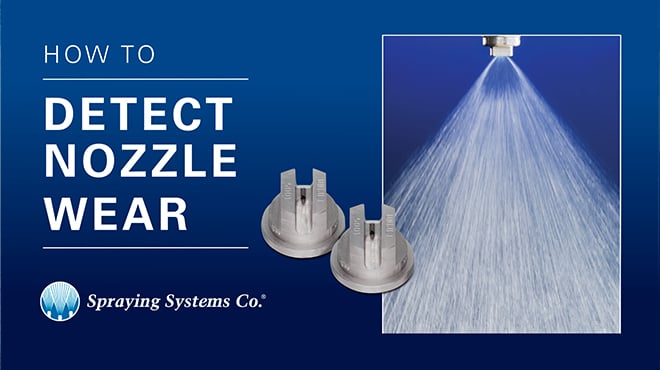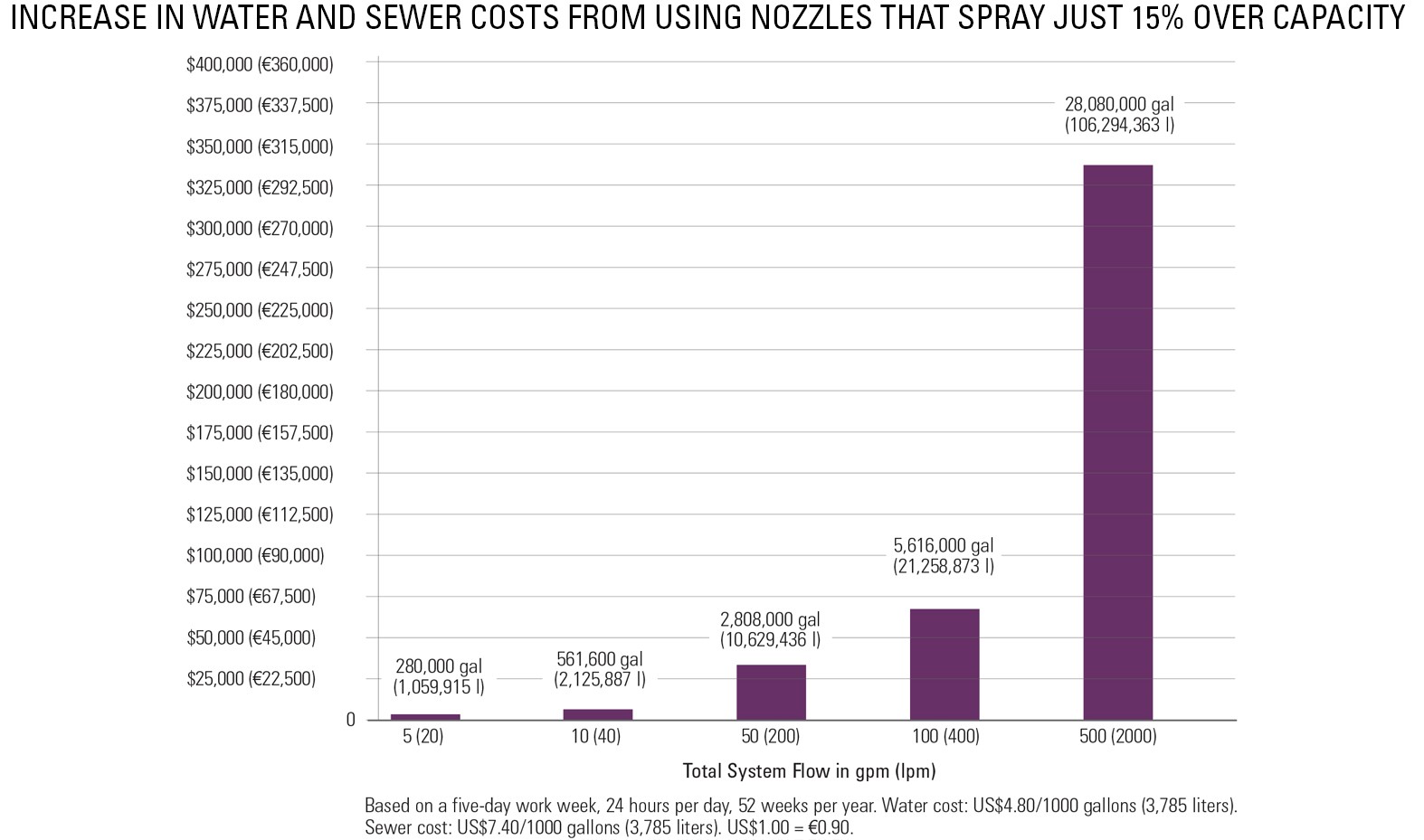Detecting and Managing Nozzle Wear in Manufacturing
Nozzle wear is a critical, often overlooked issue in manufacturing that, when ignored, can lead to substantial implications for both production costs and product quality. This article delves deeper into the importance of detecting and managing nozzle wear, providing a comprehensive guide for engineers and manufacturers.

12
Jun 23
Detecting and Managing Nozzle Wear in Manufacturing
In the world of manufacturing, the efficiency and effectiveness of your operations often hinge on the smallest components. One such component that plays a crucial role in many manufacturing processes is the spray nozzle. Despite its size, spray nozzles can significantly impact the quality of your products and the cost of your operations, especially when it starts to wear. This article delves deeper into the importance of detecting and managing nozzle wear, providing a comprehensive guide for engineers and manufacturers.
How Nozzle Wear Impacts Your Business
Nozzle wear is a critical, often overlooked issue in manufacturing and processing plants that, when ignored, can lead to substantial implications for both production costs and product quality. As a spray nozzle begins to wear:
- • The consistency of the spray pattern will be negatively affected
- • The spraying pressure could decrease
- • The flow rate will increase
In addition, larger droplet sizes and reduced total liquid surface area can result, which reduces effectiveness of the application.
In full cone spray nozzles, more liquid tends to flow at the center of the pattern as the nozzle wears. Similarly, in flat fan sprays, streaks and heavier flows become visible in the center of the pattern as the nozzle wears. These changes can affect the quality of your products, leading to inconsistencies and defects.
Worn nozzles can operate at reduced pressures, a condition that is harmful in cleaning applications. Over-capacity spraying by these nozzles leads to increased consumption of water, chemicals, and energy, which can negatively impact the efficiency of your operations. Therefore, proactive detection and management of nozzle wear are vital in maintaining the overall efficiency and cost-effectiveness of industrial manufacturing processes.
Worn nozzles can operate at lower pressures, which can be detrimental in cleaning applications. When nozzles spray over capacity, water, chemical, and energy use increases, leading to a decrease in profits. Therefore, detecting and managing nozzle wear is crucial for maintaining the efficiency and cost-effectiveness of industrial manufacturing operations.
How to Detect Nozzle Wear & Deterioration
Detecting nozzle wear is more complex than it seems. A simple visual inspection of the nozzle or its spray pattern is not sufficient to reveal the true extent of wear. Instead, a more reliable method involves checking and comparing the flow rates between a new and an existing nozzle.
To do this, you need a timer, a container, and a measuring container.
- First, spray a new nozzle into a container for a measured amount of time.
- Then, measure the amount of water with your measuring container.
- Divide the amount of water by the collection time to get the flow rate (the volume of water per minute).
- Repeat this process with an existing (possibly worn) nozzle and compare the results.
If the flow rate of the existing nozzle is greater than the new nozzle, it’s time to consider replacing your nozzles. Additionally, you can use our nozzle wear calculator for a quick assessment of how much your worn nozzles might be costing you. These tools will help you make informed decisions regarding maintenance, replacement, and optimization of your spray nozzles.
Proactive Management of Nozzle Wear
Establishing a routine nozzle maintenance program is key to prolonging nozzle life and optimizing their performance. Regular inspections and maintenance of nozzles can help identify wear and extend service life.
In addition to regular inspections, consider reducing pressure to slow liquid velocity and reduce wear, changing to a different nozzle to reduce maintenance time, and using nozzles with built-in strainers to trap particles.
The Importance of Spray System Optimization
Spray systems may seem straightforward, but they are more complex than they appear. They are not just about pumps, pipes, liquids, and spray nozzles. The performance of a spray system is not guaranteed just because the nozzles are spraying. Spray nozzles are precision components designed to deliver specific performance under specific conditions.
Optimizing your spray system is crucial for achieving long-term, efficient performance and keeping operating costs as low as possible. Without a spray system optimization program, you could be wasting significant amounts of chemicals, water, energy, and time, risking both process and product quality.
How to get the best performance out of your spray system
Here are some guidelines to ensure you are getting the best performance possible from your spray system:
- Use the Best Nozzles Available: If you’ve been using the same nozzles for a few years, consider if there are newer versions available that offer more precision, better efficiency, and longer wear life. Clog-resistant designs, quick-connect styles, and alternate nozzle materials can all contribute to improved performance.
- Consider the Value of Spray Control: Automating your spray system with a spray controller can add precision to many operations. While spray control may sound costly, most users find the added expense is offset quickly by increased production, reduced scrap rate, and decreased operating costs.
Also, consider if you might be able to accomplish your spraying objectives with a lower flow rate. One customer reduced water consumption by 80% - and saved millions of dollars by changing nozzle size. - Establish a Routine Nozzle Maintenance Program: Neglecting spray nozzles can cost you thousands of dollars annually. Spray nozzles, like any precision component, will wear with use and performance will decline. Establishing an ongoing maintenance program is crucial for optimal performance. Speak to one of our experts to develop your maintenance program today.
The Impact of Poor Spray Performance
Poor spray performance can lead to significant costs including increased water, chemical, and energy use, product rejections due to uneven cooling, coating, or cleaning, and increased manufacturing costs due to quality issues. Spray system maintenance can also cause unscheduled downtime, and health hazards such as inhaling chemicals or slippery floors.
Evaluating Your Spray System
To start optimizing your spray system, you need to evaluate your current system or set requirements for a new one. Establish specific goals and desired improvements for your spray system. These could include reducing water and chemical use, reducing scrap due to spray system performance, increasing throughput by reducing time for batch changes, reducing spray system maintenance time, and automating spray operations so workers can be deployed to other tasks.
Conclusion
In conclusion, nozzle wear is a critical issue in industrial manufacturing that requires careful attention and management. By understanding the implications of nozzle wear, implementing effective detection methods, and establishing a routine maintenance program, manufacturers can maintain the efficiency of their operations, reduce costs, and ensure the quality of their products. Spray system optimization is a crucial aspect of industrial manufacturing. By following these guidelines and regularly evaluating your spray system, you can ensure optimal performance, reduce waste, and ultimately save costs.


